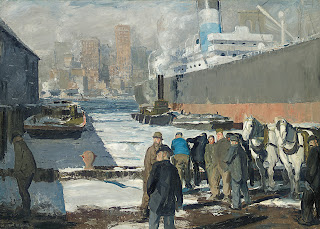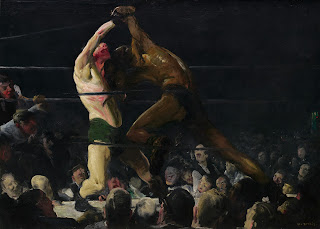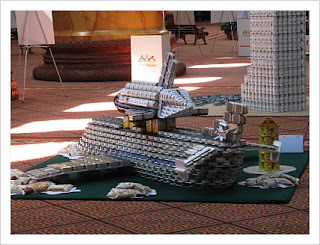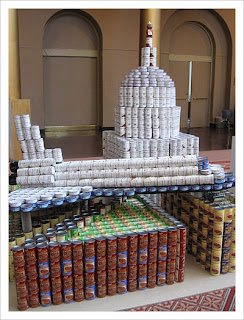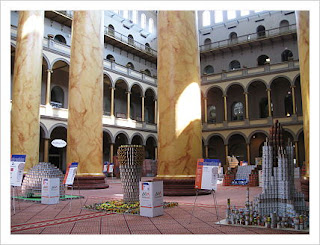It wasn't the first time the Kennedy Center has moved its Millennium Stage upstairs to the Atrium, according to an usher.
"They are just trying something new," she said. "Do you like it?"
It was new all right, and refreshing and hip and more like a club and in retrospect, the new venue made the Millennium Stage on the ground floor seem like a school classroom and old-fashioned with its folding chairs all neatly lined up and ushers saying "hush, hush." Goodnight, mush.
My gawd, the new digs were almost electric, in contrast, "fluid" and flexible. "Mood" lighting and draperies added to special effects.
My gawd, the new digs were almost electric, in contrast, "fluid" and flexible. "Mood" lighting and draperies added to special effects.
"There aren't enough seats," said another usher, "but this is the way they want it. Kind of like a jazz club. But you can sit on the floor," and many of the young and the old and the in-between did just that.
More college students than normal milled about, checking out the crowd, and chatting while enjoying liquid refreshment. (Thank goodness, Happy Hour transferred upstairs, too. I was crushed, absolutely crushed at the prospect of no beer and trinkets with free music at KenCen which, after a nanosecond's thought, gave way to reality and revenue, and there was the bar after all! Reason lives.)
What will they call it? The Atrium Stage?
What will they call it? The Atrium Stage?
Up on stage was Toubab Krewe, a quartet of instrumentalists from Asheville, N.C., who combine their sounds from guitar, piano, fiddle, bass, percussion, kora (Wikipedia: "a 21-string bridge-harp used extensively in West Africa"), kamelengoni (12-string harp lute), and djembe (a drum played with bare hands) to make unique music with influences from Africa, the Middle East, the East, and Hawai'i.
According to program notes, the difference between Toubab Krewe and other groups adapting African music is the way Toubab innovates on what's been learned "instead of simply recreating tradition."
The group's members are Justin Perkins, Drew Heller, David Pransky, and Luke Quaranta who have studied and lived in Guinea, the Ivory Coast, and Mali, and have performed in festivals around the world including Bonnaroo and in Mali, the Festival In The Desert.
At KenCen, Toubab's lively, not too harsh nor too loud, somewhat mellow music uplifted the crowd and sent everyone out on a happy note to go watch the Nats. It was lots of fun, and that's what music is about, isn't it?
Goodnight to the old lady whispering "hush."
At KenCen, Toubab's lively, not too harsh nor too loud, somewhat mellow music uplifted the crowd and sent everyone out on a happy note to go watch the Nats. It was lots of fun, and that's what music is about, isn't it?
Goodnight to the old lady whispering "hush."
(Wikipedia says "toubab" means foreigner in several West African languages, and "krewe" is the New Orleans way to spell "crew.")
What: Oct. 15 Nathan Williams and the Zydeco Cha Chas (with free dance lessons at 5 p.m. with Dancing by the Bayou)
Oct. 16 Hilton Worldwide: Compagnie de Danse Jean-Rene Delsoin
Oct. 17 Fire and the Wheel
Oct. 18 Theater Patrasket: Friendship (Denmark)
For future performances, click here.
When: Seven days a week at 6 p.m.
Where: The Kennedy Center, 2700 F Street, NW Washington, D.C. 20566
Where: The Kennedy Center, 2700 F Street, NW Washington, D.C. 20566
How much: Admission is always free at the Millennium Stage
Metro station: Foggy Bottom and ride the free shuttle (every 10 minutes) from there to KenCen or walk it (10 minutes)
For more information: 800-444-1324 or 202-467-4600










